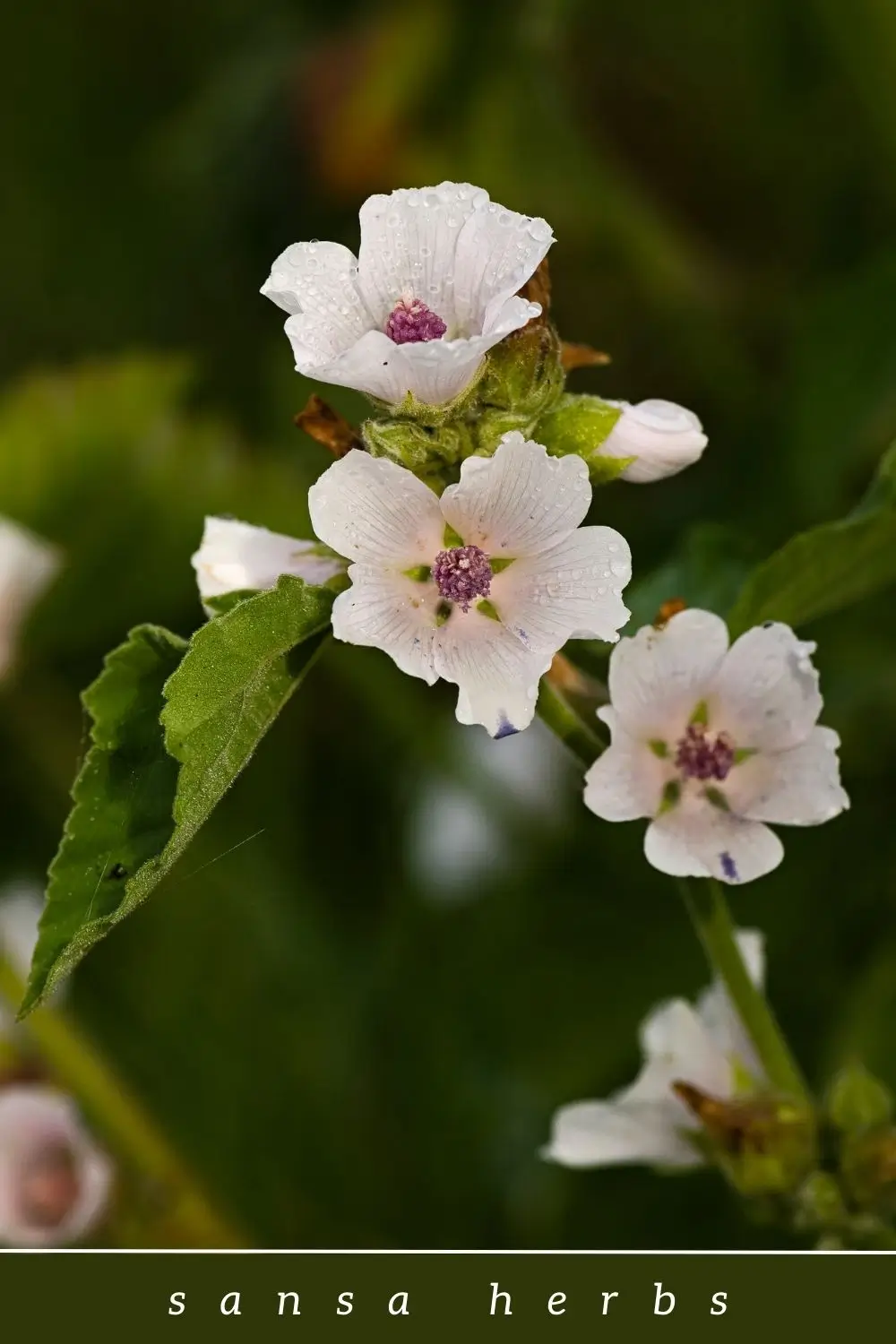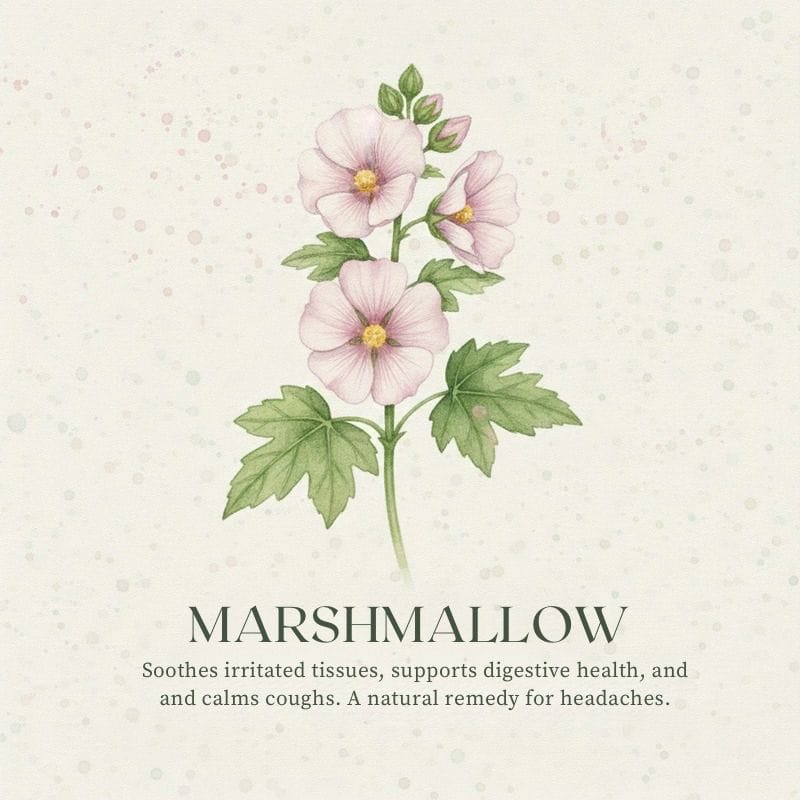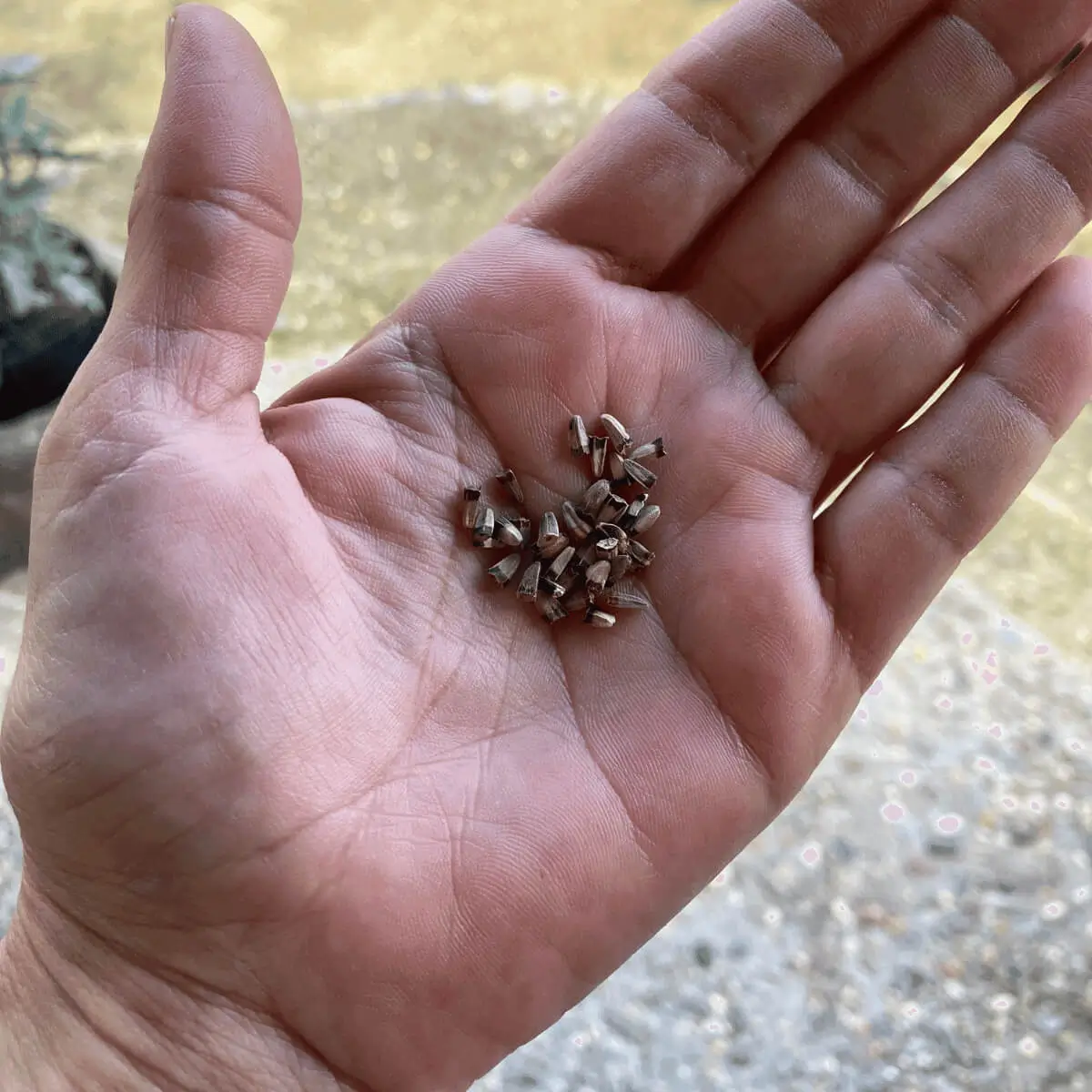Marshmallow root benefits the body primarily as a gentle yet effective herbal remedy traditionally used to soothe irritation in the throat, lungs, and digestive tract, thanks to its high content of a natural, jelly-like substance called mucilage. For beginners, growing marshmallow is a rewarding way to access one of the most cherished soothing herbs in history, which is now conveniently included in the easy-to-use Medicinal Garden Kit.

Start Your Living Pharmacy: Why Grow Marshmallow?
For thousands of years, the marshmallow plant has been valued for more than just its elegant looks. Unlike the fluffy sweet treat that took its name, the real Althaea officinalis is a powerhouse of soothing compounds.
What is Marshmallow (Althaea officinalis)?
Marshmallow is a stately perennial herb in the mallow family (Malvaceae). Its genus name, Althaea, comes from the Greek word “altho,” which means “to cure.” This ancient healing plant grows as a hardy perennial in USDA zones 3-9, reaching heights of 4-6 feet with soft, velvety, gray-green leaves and delicate white-to-pale-pink flowers. It adds beautiful vertical interest to a garden and attracts beneficial pollinators.
Beginner Tip: Starting marshmallow from seed is a wonderful way to begin your herbal journey. The seeds for this vital plant, along with nine other essential herbs, are available in the Medicinal Garden Kit.
Click here to get 10 premium herb seed packets + a FREE Herbal Guide!
Why Confusion About Capsules vs. Candy Matters
Many beginners are surprised to learn that the herb marshmallow root is not related to the modern white candy, which is made from gelatin and sugar. However, the candy was named after the plant because the sticky extract from the actual root was the original key ingredient! In fact, the grocery store version of marshmallows is one of the only foods named for a key ingredient that it no longer contains, making the plant’s history even more unique.
- Then: Ancient Egyptians reserved the root’s soothing mucilage, mixed with honey, as a special remedy for gods and royalty. French confectioners later whipped the extract into Pâte de Guimauve (marshmallow paste) for its soothing properties.
- Now: Modern marshmallow candy uses gelatin and corn syrup for texture. The therapeutic benefits remain only in the plant-based supplement (capsules, powder, or tea).
Understanding this history shows you the powerful, science-backed legacy you are tapping into when you use marshmallow root supplements or grow the herb yourself.
The Simple Science: How Marshmallow Root Soothes

The primary reason marshmallow root is sought after is its mucilage content. This is why it is revered as an incredibly demulcent herb.
What is Mucilage and How Does it Work?
Mucilage is a gummy, jelly-like substance made of long-chain sugar molecules (polysaccharides) that swell up when they come into contact with water. The resulting soothing, cooling, and moistening action is called demulcent. If you’re not familiar with the term, just think of how a bowl of old oatmeal becomes thick and gooey, that is the demulcent action at work.
- Coating Action: When you drink a tea or take a capsule containing marshmallow root powder, the mucilage mixes with saliva and water, forming a slick, gel-like coating.
- Soothing Irritation: This protective layer coats the irritated mucous membranes in your mouth, throat, and digestive tract. Think of it like a natural, plant-based balm that calms the tissues.
- Targeting Pain Points: This action is especially helpful for common beginner pain points like dry, irritating coughs, the discomfort of a sore throat, or digestive issues where the lining of the stomach or esophagus is feeling inflamed.
All parts of the plant contain mucilage, but the root is considered the most potent. Research suggests it may also help with tissue regeneration in irritated mucous membranes.
Growing Marshmallow from Seed: Practical Steps
Growing marshmallow from seed requires a little patience, but the payoff is a beautiful, self-sustaining source of natural remedy.
When and Where to Sow Marshmallow Seeds?

Marshmallow seeds are small, flat, and kidney-shaped. They require a period of cold to encourage germination, a process called cold stratification.
- Starting Indoors: Start seeds 6–8 weeks before the last expected frost. Place seeds in the refrigerator (mixed with a bit of damp sand or peat) for 4–6 weeks first.
- Direct Sowing: Sow seeds outdoors in early spring after the last frost, or in the fall for natural cold stratification over the winter. Sow them 1/4 inch deep.
Soil and Care Guidelines
Marshmallow thrives in rich, consistently moist, well-draining soil. Unlike many herbs, it appreciates fertile conditions.
Plants generally begin flowering in their second year. For medicinal root use, harvest typically begins after the second or third growing season.
Quick Reference: Growing Marshmallow from Seed
| Basic Growing Information | Growing Conditions |
|---|---|
| Difficulty Level: Moderate | Light Requirements: Full sun to partial shade |
| Time to Germination: 10-14 days | Soil Type: Rich, moist, well-draining |
| Time to Maturity: 120-140 days | Soil pH: 6.0-7.0 |
| Plant Height: 4-6 feet | Temperature Range: 65-75°F (18-24°C) |
| Spacing: 18-24 inches apart | Water Needs: High, prefers consistently moist soil |
| USDA Zones: 3-9 |
Growing Locations
Container Growing: ✓ Possible
Indoor Growing: ✗ Not recommended
Outdoor Growing: ✓ Ideal
Historical & Traditional Significance
Astrological Association: Venus (according to Culpeper)
Traditional Uses:
Respiratory support, Digestive health, Skin soothing, Wound healing
Can Marshmallow Be Grown in Containers or Non-Swampy Areas?
Yes, you can absolutely grow marshmallow in containers, and a swampy environment is not necessary. While its name suggests a marsh, the plant is adaptable. Many people find success in deep pots, as the plant only truly needs consistent moisture and rich soil to thrive.
You do not need a wild variety; the cultivated varieties purchased from reputable garden centers or in the Medicinal Garden Kit are perfectly potent and safe to use. Many successful growers live in dry regions and simply provide regular irrigation.
How to Use Marshmallow Root for Soothing Relief

Marshmallow root can be used in several forms, but because the key ingredient (mucilage) needs water to work, it is best used as a cold infusion or in capsule form.
Best Use Cases: Fatigue, Coughs, and Digestive Upset
| Pain Point | How Marshmallow Helps |
| Dry, Persistent Cough | The mucilage coats the irritated membranes in the throat and lungs, reducing the urge to cough. A 2020 review confirmed its effectiveness for dry coughs. |
| Acid Reflux/Stomach Upset | The protective gel-like coating soothes the lining of the esophagus and stomach, helping to heal wounds and reduce inflammation (vulnerary action). |
| Urinary Tract Discomfort | Research suggests it works systemically to promote moistening of the tissues, which may support the body in hot and painful urinary problems such as cystitis or UTIs. |
Critical Support for Irritation and Severe Weakness
- Soothing Irritation: Marshmallow root may support the soothing of irritation in the throat and mouth, including the severe dry mouth and burning that can result from certain medical treatments. Cold-infused tea delivers maximum mucilage directly to the affected area.
- Strengthening Food: Historically, the roots were considered a deeply nourishing food. Because the roots are high in nutrients and gently digested, they have been traditionally used to support people who are weak or unable to tolerate many other foods, such as during convalescence or illness.
DIY Tip: You can easily fill your own capsules using high-quality dried marshmallow root powder from a trusted source like Herb Affair. They offer a great DIY capsule filler to help you save money and control exactly what you are taking.
Safety & Trust: A Note on Herbal Supplements
Marshmallow root is generally well-tolerated when used appropriately.
Trust & Safety: While marshmallow root is a gentle and traditional herb, anyone with medical conditions, those who are pregnant or breastfeeding, or those taking medications should speak with a healthcare professional before starting new supplements.
Important Medication Note: The mucilage in marshmallow can slow down the absorption of other medications. Always take marshmallow root supplements at least two hours before or after taking any prescribed medications to prevent interference.
Herbal Energetics: This herb is powerfully cooling and moistening. It is best used when your symptoms involve signs of heat, irritation, or dryness (like a dry cough or burning pain).
Marshmallow Root Benefits: FAQ
The roots, which are the most potent part, are typically harvested in the fall after the plant has been growing for at least two to three full seasons (years). The plant needs this time to develop a substantial root system and accumulate medicinal compounds.
For seeds, the Medicinal Garden Kit is a simple option that includes marshmallow seeds and a planting guide. For dried root powder for teas or DIY capsules, look for cut and sifted organic root from a trusted online herb seller like Herb Affair.